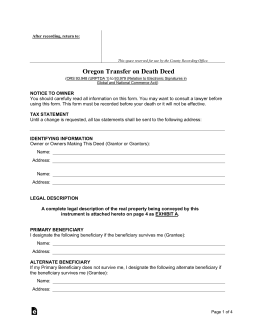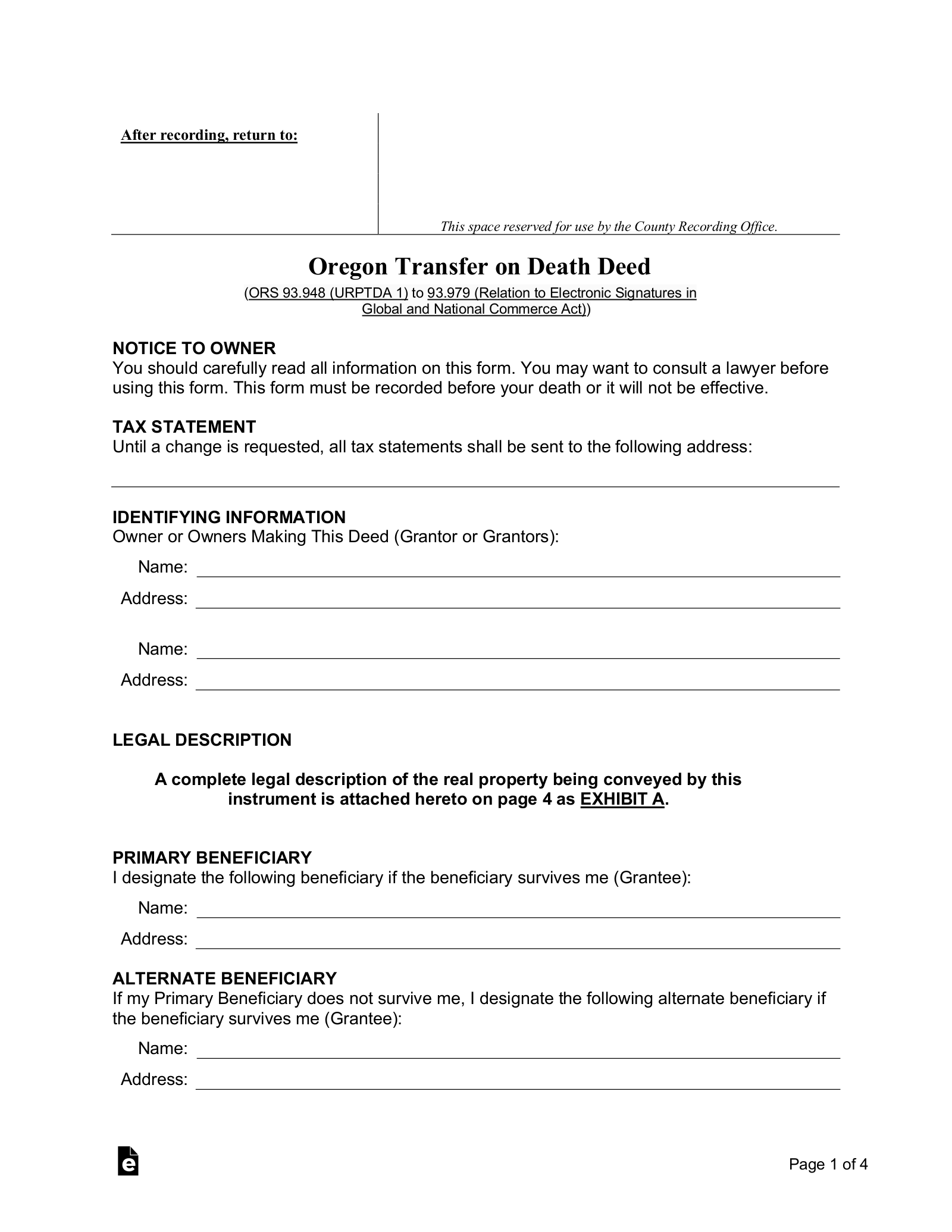Updated April 12, 2024
An Oregon transfer on death deed is a document that allows a person to transfer their ownership of real property to a designated beneficiary upon their death. Also known as a “beneficiary deed” or “TOD deed” for short, it is commonly used to avoid the probate process, which can be drawn out and costly.
Table of Contents |
Requirements
- Notary: Required.[1]
- Witnesses: Not required
- Recording: Before the owner’s death in the deed records in the office of the county clerk where the property is located.[2]
Legal Description
A TOD deed must include a legal description, which provides the exact boundaries and physical attributes to identify the real property. Legal descriptions typically follow the Public Land Survey System (PLSS), which divides land into townships, ranges, and sections. It also provides exact measurements of the property using fractional or metes-and-bounds descriptions.
The legal description can be found on the property deed or obtained in the deed records of the county clerk’s office in the county where the property is located.
Example
“The East half of the Northwest quarter of Section 11, Township 4 South, Range 3 East of the Willamette Meridian, in Lane County, Oregon.”
Revocation

In Oregon, a recorded transfer on death deed can be revoked or changed using one of three methods:[3]
- Recording a transfer on death deed that revokes the deed, or part of the deed, expressly or by inconsistency
- Recording an instrument of revocation that expressly revokes the deed, or part of the deed
- Recording an inter vivos deed that transfers an interest in property while the transferor is still alive
For the revocation to take effect, it must be recorded before the transferor’s death in the deed records of the county in which the property is located.
How to Record
A transfer on death deed must be recorded before the transferor’s death in the deed records of the county clerk’s office.[2]
Once recorded, it becomes effective without the consideration of, notice to, or acceptance by the designated beneficiary during the transferor’s life.


